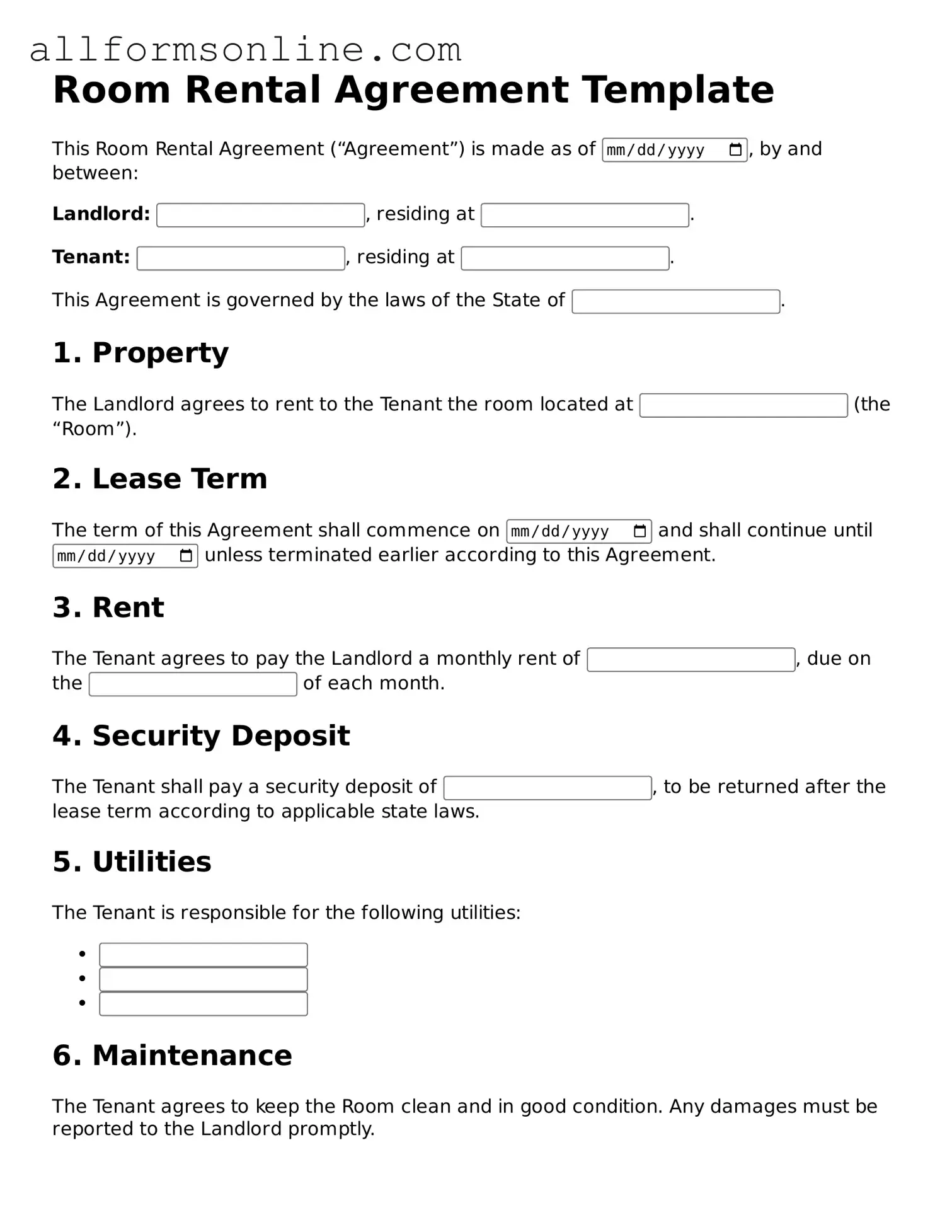What is a Room Rental Agreement?
A Room Rental Agreement is a legal document that outlines the terms and conditions under which a tenant can rent a room from a landlord or property owner. This agreement typically includes details such as the rental amount, duration of the lease, security deposit requirements, and responsibilities of both parties. It serves to protect the rights of both the tenant and the landlord by clearly defining expectations and obligations.
What should be included in a Room Rental Agreement?
Essential elements of a Room Rental Agreement include the names of the landlord and tenant, the address of the rental property, the rental amount and due date, the duration of the rental period, and any rules regarding the use of common areas. Additionally, it should specify who is responsible for utilities, maintenance, and repairs, as well as any policies on guests and pets. Clear communication of these details helps prevent misunderstandings.
How long is a typical Room Rental Agreement?
The duration of a Room Rental Agreement can vary widely based on the needs of the landlord and tenant. Common terms include month-to-month agreements, which allow for flexibility, or fixed-term leases, which typically last six months to a year. It is important for both parties to agree on the length of the rental period and to understand the implications of each type of agreement.
Can a Room Rental Agreement be modified?
Yes, a Room Rental Agreement can be modified, but both parties must agree to any changes. Modifications should be documented in writing and signed by both the landlord and tenant to ensure clarity and enforceability. Common reasons for modifications include changes in rental amount, duration, or specific rules regarding the property.
What happens if one party violates the Room Rental Agreement?
If either the landlord or tenant violates the terms of the Room Rental Agreement, the other party may have the right to take action. This could involve providing notice to remedy the violation or, in some cases, pursuing legal action. It is advisable for both parties to familiarize themselves with the terms of the agreement and local laws to understand their rights and responsibilities in such situations.
Is a Room Rental Agreement required by law?
While it is not always legally required to have a written Room Rental Agreement, it is highly recommended. A written agreement provides legal protection for both parties and helps clarify expectations. In many jurisdictions, having a formal agreement can prevent disputes and provide a clear framework for resolving issues that may arise during the rental period.
